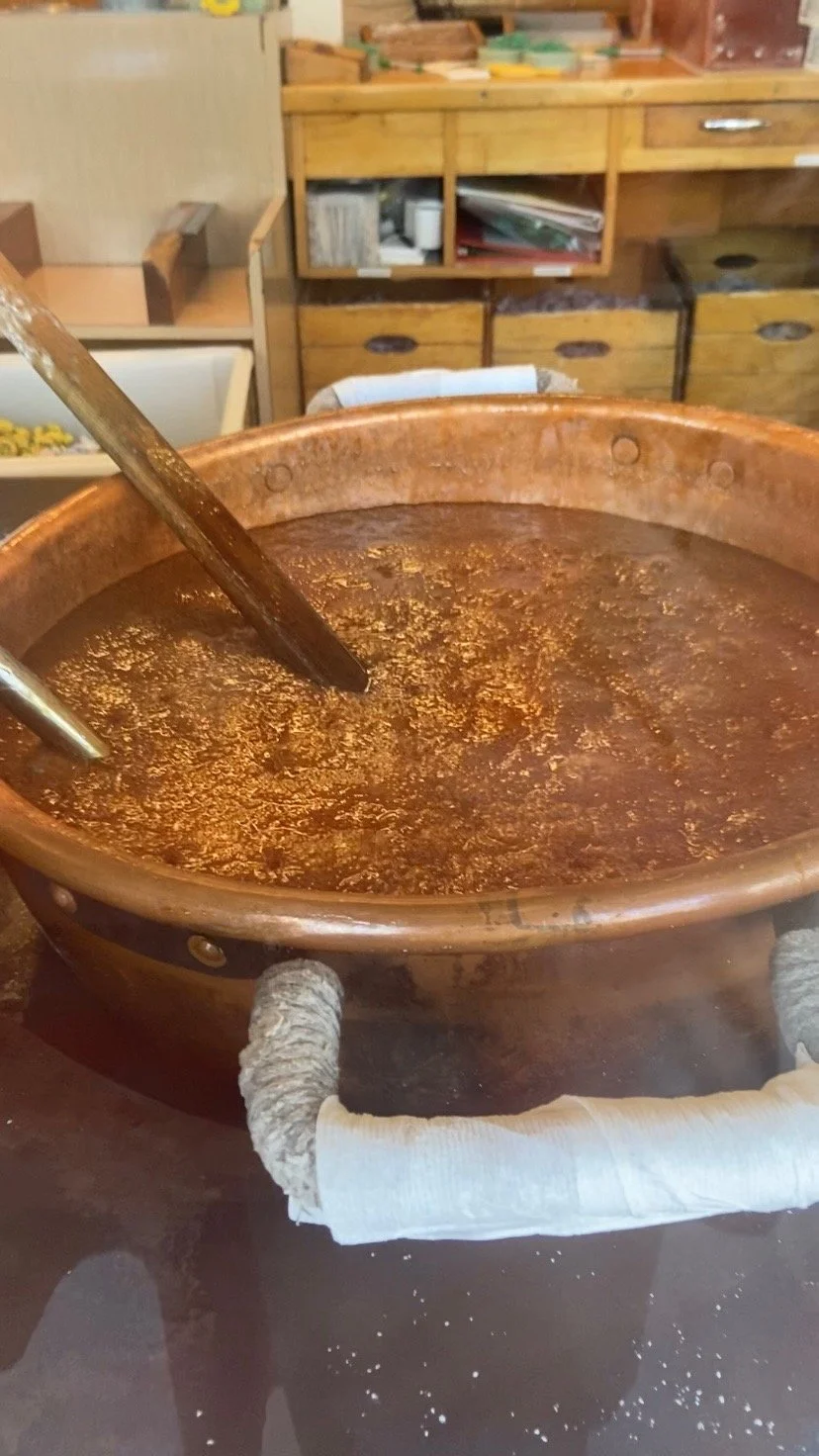A blob of sugar dough
York Beach, Maine, 1906. Mostly, it’s the clothes that have changed.
There’s a part of my hometown that’s like a teeny-tiny Atlantic City boardwalk, right down to the amusement park, the arcade, and the saltwater taffy.
Taffy soup.
The place that has the saltwater taffy is called The Goldenrod. Open only in the summer, it s a York Beach institution. The restaurant, which has a soda fountain, a stone fireplace, and lacquered wooden tables, used to sell penny candy by the piece at a counter always staffed by a very patient young college student. Founded in 1896, The Goldenrod was already full of nostalgia when I was a kid.
Taffy blob.
The Goldenrod’s taffy production facility is viewable through giant windows along the street on two sides of the building. You can see that the taffy begins life as a soup of sugar boiling in a giant copper kettle. Then, the thickened mixture cools on a large piece of wax paper.
Once cool, the taffy dough is stretched out on a taffy-puller, upon which is it kneaded in a hypnotic automated dance.
The final step is a trip on a fancy machine that cuts the taffy into little pieces and puts wrappers on them, after which the completed candies fall satisfyingly into a basket.
Seeing the whole production line is fascinating. Who came up with this? Who refined the process? What kind of market is there for taffy pullers and taffy cutting-and-wrapping machines?
Saltwater taffy, like the Goldenrod itself, is a testament to the power of a grand vision and the dedication to see it through (not to mention the capital).
When you’re trying to do a complicated project, it can be discouraging when the results you’re getting don’t look anything like what you’re looking for.
The vat of brown liquid doesn’t look anything like taffy.
The blob of sugar dough doesn’t look anything like taffy.
Starting to look like taffy.
By the time the taffy dough has been on the taffy puller for awhile, It’s starting to look more like taffy. But it was a lot of work to get there, and it’s easy to imagine that it was an act of faith (or perhaps a lucky accident) when it happened the first time.
In our projects, the farther we go, the more help we need. When we’re making taffy, we need the taffy puller to aerate it (or else we have to knead it by hand). Likewise, when we’re doing any complicated project, we might need skills, materials, and support we’ve never needed before. That doesn’t mean we’re inadequate — it’s a sign that we’re creating something that’s stretching our capacity and challenging us.
Ready to rot someone’s teeth!
As we continue, things get even more sophisticated. At the start, hard part is getting up the courage to begin. By the time we get to the point where each part of the production line is active, the hard part becomes managing the process and keeping it going even when things go wrong. This requires a different skill set and will test us in new ways.
Maybe we can do without the fancy machines, but we should know that’s the hard way. And we you compare ourselves to others, we should know that they might be taking advantage of a larger or more skilled team, better equipment, or a higher level of experience.
Wherever we are in the journey is right where we need to be. Each step has own puzzles and problems to solve, and sometimes the step we’re on makes it feel like we’ll never get to where we want to be. But with the right help and resources, we can succeed.
The journey can be difficult, but the reward is sweet. It’s not about the candy. It’s about what we learned and how we grew. And every so often, something can be built that transcends its origins and outlasts its creator to delight generations to come. It begins with the courage to see the end in the beginning, even when it starts out looking like nothing more than a brown blob.









